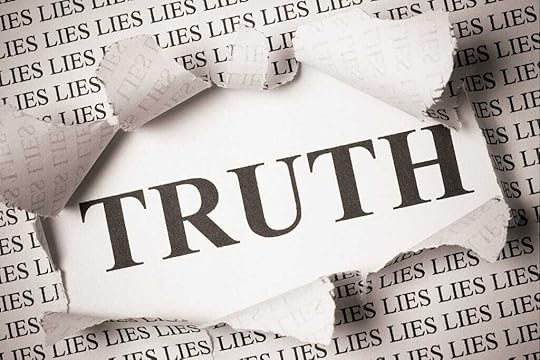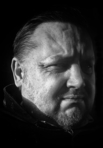The Truth That Wears Its Own Mask

Truth today arrives in borrowed clothes, tailored from pixels, stitched by inference, paraded through mirrors polished by opinion. It pledges allegiance to the performance of fact — gleaming, curated, viral. Once held in the gravity of stone and consequence, it now travels light, agile as rumour, sleek as code. The old oaths of philosophers, prophets, and judges have yielded to trending tags and algorithmic consensus. The truth we once knew has migrated. It still speaks, aye, in a voice altered by filters, flattened through repetition, its resonance become a notification’s chime, a sound filling the space of a cathedral’s echo. Sir Francis Bacon, with his ink-stained fingers and restless stare, spoke of jesting Pilate asking, “What is truth?” then turning before an answer could rise. That same question rings now across fibre optic lines, echoed in comment sections, in deepfaked speeches, the jest grown elaborate, and Pilate, reborn a pundit, lingers just long enough to monetise the doubt. Bacon sought truth in observation, in method, in the patient peeling of nature’s veils. Writing today, he might begin his essay between browser tabs, his quill a machine autocompleting his thoughts before he can weigh them. Even then, he’d feel the same tremor in the air — a human longing for certainty, for anchorage, for the steadying pulse of what endures.
And what endures now? We once thought of truth as granite, as that which rests beneath the sediment of falsehoods, waiting to be unearthed. Today it floats — buoyant, reactive, caught in a swirl of competing narratives, each demanding belief. The shift is subtle and seismic both: our question has become “Is it persuasive?” and even “Is it shareable?”, inquiries that stand where “Is it true?” once stood. The feed is our new courtroom; engagement is our new testimony. A well-lit anecdote outweighs a library of facts. In this strange ecology, truth survives through masquerade — adapting to the aesthetic of certainty, a form that eclipses its content. What we call truth often functions as a brand. It accumulates followers, defends its market share, cultivates an identity. Competing truths vie like political parties, each promising access to reality with just enough friction for a feeling of involvement. The “truth” of the hour may stand opposite yesterday’s certainties, and so long as the story satisfies, the shift feels like evolution, a movement away from any sense of betrayal. We re-style truth. It becomes a costume party of conviction where everyone arrives overdressed. The philosopher’s lamp, once lit to illumine the path of reason, flickers beside a neon billboard where “truth” is hashtagged, monetised, and stored in a cloud server owned by someone who builds tools to bend it. The thirst remains. The hunger for the real — for something that withstands the scroll, the swipe, the slant. Beneath the spectacle, the soul still reaches for something that holds its own form.
In this new terrain, truth feels malleable because its casing has grown so soft. Beneath the layers of post, pose, and parody, it holds steady. Its challenge has become a matter of being felt, a presence that comes after being found. The digital realm saturates us with exposure while it starves us of touch. We witness more and we know less. We see the world, refracted through endless eyes, and we learn to trust other visions before our own. Francis Bacon lived in a world where truth required labour — observation, experiment, refinement. Today, it demands navigation. We sift through noise to detect coherence, to sense the pulse beneath the static. If Bacon walked among us now, he’d call for a new method, one of spiritual clarity alongside science. He’d urge us to grow discernment, to shape our gaze like a lens, to live as craftsmen of clear attention. In his day, truth stepped through the stirred dust of hard questioning. In ours, it sits in plain sight, draped in its own plenty. Its treatment now carries a slyness where once fierce outrage flared. Satire serves as sermon, memes function as missives. We laugh from a place of disorientation, a feeling that has taken the place of amusement. The age of sincerity feels naïve. To speak plainly risks sounding old-fashioned, or even unengaged. In such a climate, truth’s greatest threat becomes a certain kind of laughter, the kind that deflates, a sound distinct from the laughter that frees.
Even lies once carried ambition. The lie aimed to deceive, and also to persuade. Deception now operates by diffusion. The aim is to exhaust, a goal that has supplanted the aim to convince. In the avalanche of conflicting truths, the very act of caring wears thin. Doubt, once the philosopher’s tool, now functions as a weapon. Where skepticism once cleared the ground for deeper faith, today it seeds a haze that chokes belief before it can bloom. Still, truth lives — in gestures, in bodies, in breath. It moves in the rhythm of real things: the tremble of a voice, a pause filled with weight, a silence rich with meaning. Truth steps away from speech, then gathers again through presence. A father’s quiet fear, a mother’s waiting hours, a child’s deep trust — these speak with a clarity beyond captions. We must remember that truth always promised revelation, a state apart from comfort. Its nature is revelation, a state apart from ease. It calls something forth in us: the courage to attend, the grace to reshape, the patience to stay open. In a world that celebrates the instant, truth invites us to linger. Where the market chases novelty, truth often waits in the familiar. It hums beneath the din, a sound quieter than a shout.
To honour truth now requires a kind of monastic attention, a devotion, a turning toward something with our full being. A readiness to return the gaze, to hear beneath the headline, to hold our own applause in wonder. The practice of truth rises as resistance — to easy answers, to polished certainty, to the pressing of the world into edible lines. What emerges as truth, then, in this flickering light? It is the quietest claim, the one that travels by foot. It arrives shyly, often through questions, a form that precedes declarations. It prefers texture over clarity, nuance over slogan. It requires time, attention, and the risk of being wrong. It walks slowly, even when everything around us runs. And it changes us. When we encounter truth as an encounter, a presence instead of a spectacle, we do more than learn; we remember. Something ancient stirs, some primal thread of recognition. Truth invites the self to shed its costume. It calls us back to the quiet knowledge we carried before we learned to perform.
Francis Bacon, seated now with the screen’s glow upon his inked face, would write of poise. He would speak for the slow cultivation of trust, a counterpoint to the ease of certainty. He would remind us that truth, like the sun, shines its presence. And in its light, all shadows take form. To write of truth today is to write a kind of elegy and invocation both. An elegy for the trust we traded for convenience. An invocation of the presence that still pulses beneath. It is to stand in the noise and listen for the note that holds. Because truth endures, touched and alive. It shapeshifts, yes. It bends to expression, to culture, to voice. Beneath every form it takes, there lies a fidelity — to what is, to what matters, to what calls us inward and forward. The task has become to create the space where truth may be heard, a purpose that comes after merely speaking it. In that space — quiet, open, human — the real begins again.
[image error]


